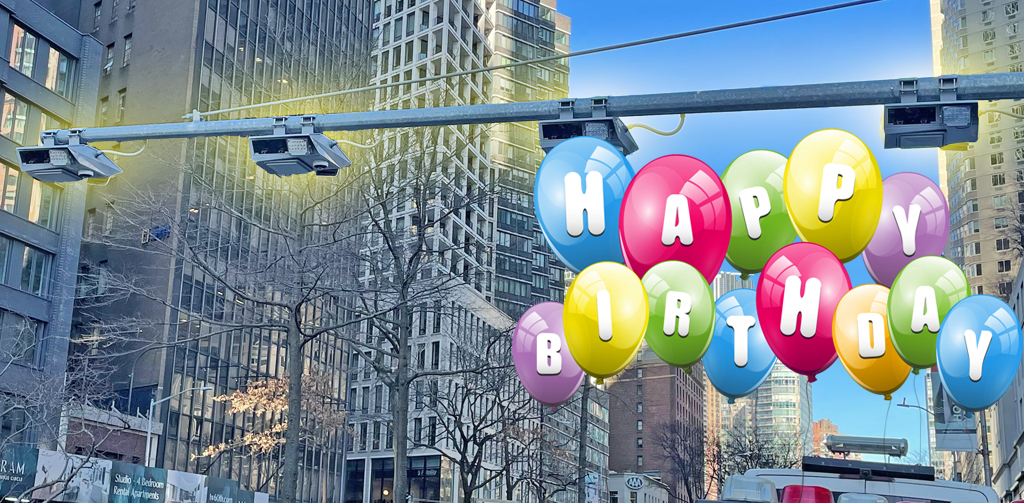American cities and towns should get a leg up on using federal funds to make streets safer for biking and walking, thanks to rules enacted yesterday by the Federal Highway Administration.
MAP-21, the current transportation law, was passed hurriedly enough that not all the i's could be dotted and t's could be crossed -- and some of those details simply aren't the business of Congress to work out. It's up to U.S. DOT to put a finer point on many of the provisions in the bill. The agency is still struggling with a lot of them and has, admirably, opened the door to significant public input to help them put meat on MAP-21's bones.
Some of the details came out yesterday, with FHWA's guidance on the Transportation Alternatives program, which replaced the popular Transportation Enhancements program as a major funding source for bicycle and pedestrian projects.
America Bikes was quick with its analysis of the pros and cons of the new rules, and chief among the good news is that the guidance preserves local control over bike/ped funds by denying states eligibility for TA funds.
The disappointing provisions in MAP-21 haven't gone away. TA money still gets split down the middle, with half going to cities and towns and the other half going to the states. And state DOTs can still have the option of either running a competitive grant program with their half of the funds, or "flexing" their entire portion to whatever they want. But states can no longer apply to their own grant programs, clearing the way for greater local access to these funds.
"If you make a contest with your own rules, and you apply to it, who’s going to win?" said Mary Lauran Hall, spokesperson for America Bikes.
Primarily, the rule means that if a state decides to use its TA funds on bike and pedestrian infrastructure, local agencies will have a greater say in how the funds get spent. But it won't just prevent state bike/ped projects from competing against city bike/ped projects. One of the most disappointing changes in MAP-21 was that states can now spend TA funds on environmental mitigation for road building. Those tend to be big, expensive projects that can elbow crosswalks and bike lanes out of the running. This rule seemingly negates that option, unless the state finds a local agency to sponsor the environmental mitigation project.
States that do want to build bicycle and pedestrian networks are still welcome to do so, and can even use TA money for them -- they'll just have to partner with localities.
It's a step forward that states will have to choose cities and towns as winners for their local grants, and not themselves. "Neighborhoods get biking and walking 100 percent," said Darren Flusche of the League of American Bicyclists. "Cities get bicycling and walking very well. They understand the livability, the quality-of-life impacts and the transportation necessity of those investments. States tend not to. At that scale, state DOTs tend to be thinking about moving cars and freight rather than human scale walking-and-biking level of transportation."
He said the state level is where a lot of bicycle and walking projects "get lost on the priority list."
There are exceptions, and more states are beginning to "get it." Delaware is a prime example, with one of the bike-friendliest governors and DOT secretaries in the country. Minnesota is another state that's getting accolades. There are some states that spend far more than they're required to on biking and walking, and others that let those projects languish, spending money on anything and everything else.
Both Flusche and Hall emphasized that local advocacy will be paramount to ensure that states adequately fund biking and walking. They're still trying to figure out how to effectively track how states are spending their money and to determine who's "flexing" funds out of TA altogether. Transparency isn't the strong suit of most state DOTs or the FHWA.
Perhaps more importantly, Flusche said, advocates should remember that TA isn't the be-all-and-end-all of bike/ped funding. "We don’t have to be limited to TA," he said. "TA shrunk. We need to be thinking bigger." He'd like to see more bike and pedestrian projects compete for funds out of the Surface Transportation, Congestion Mitigation and Air Quality Improvement, and even Highway Safety Improvement programs.
The FHWA mentions those sources in its guidance on Transportation Alternatives. Flusche read that as encouragement for bicycling and walking projects to compete for those funds.
In addition to the rule about state TA funds, the FHWA made a few other announcements of note:
- Adult bicycling and walking safety programs are no longer eligible for TA money. Children's safety programs remain eligible.
- Safe Routes to School projects are eligible under TA but are no longer 100 percent federally funded -- local jurisdictions will now need to come up with a 20 percent match. The good news, however, is that they are now permitted to fund SRTS coordinators' salaries out of TA.
- Other programs that Transportation Enhancements funded but that are now out of the running for TA money include scenic sites and highways, historic preservation, and transportation museums. Opponents of federal street safety programs will have to find some new talking points.






